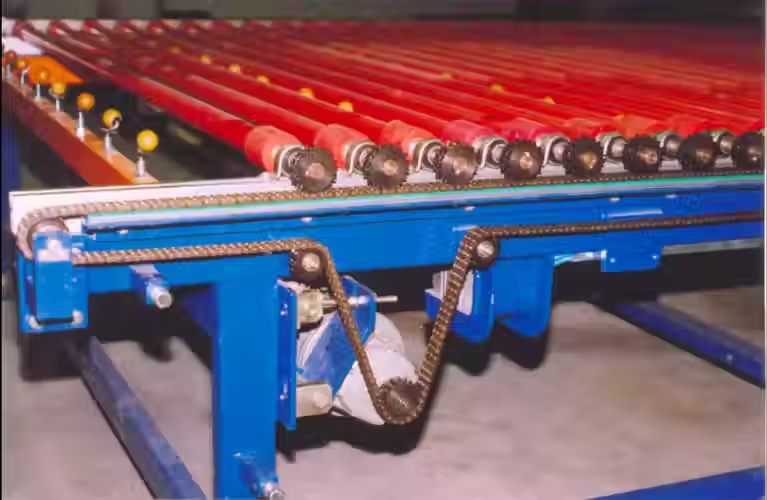Hydraulic Elevating Stepper Feeder System Manufacturers
- Jaswanth srinivas
- Oct 17, 2024
- 3 min read
Hydraulic Elevating Stepper Feeder System Manufacturers
A Hydraulic Elevating Stepper Feeder System Manufacturers is an essential piece of industrial machinery designed to facilitate the movement and positioning of materials or components in a manufacturing or production line. This system combines hydraulic power with a stepper motor to deliver precise, controlled feeding and elevating of materials in a consistent and efficient manner. Used in industries such as automotive, metalworking, and heavy manufacturing, the system's design ensures smoother workflows, increased productivity, and enhanced precision in material handling operations.
Key Components and Functionality
Hydraulic System: The hydraulic component of the system serves as the driving force behind the elevating mechanism. Hydraulic cylinders, powered by a hydraulic pump, are responsible for lifting and lowering the feeder platform. Hydraulic systems are chosen for their ability to provide immense lifting power, which is necessary when working with heavy or bulky materials. The hydraulic system allows for smooth, gradual elevation or lowering, ensuring minimal jerks and shocks that could disrupt material positioning.
Stepper Motor: The stepper motor in the feeder system plays a critical role in controlling the horizontal movement and feeding action. Stepper motors are ideal for applications requiring high precision, as they can accurately control the positioning of the materials in small increments. By converting digital signals into mechanical motion, the stepper motor ensures that materials are fed into the production line with exact timing and position, contributing to the overall efficiency and accuracy of the operation.
Feeder Platform: The feeder platform is where materials are placed before being elevated and fed into the production system. Depending on the application, the platform can be designed to handle various types of materials, such as metal sheets, rods, or other components. The platform must be robust enough to support the weight of the materials while ensuring smooth movement during the feeding process. Customization options are often available to fit the specific dimensions and weights required by different industries.
Control System: The hydraulic elevating stepper feeder system is typically equipped with a programmable logic controller (PLC) or similar control unit. The control system governs both the hydraulic lift and the stepper motor, allowing for precise control over the feeding rate, material position, and elevation. The operator can adjust settings based on the production requirements, ensuring optimal efficiency and minimal downtime. Additionally, sensors and feedback systems provide real-time data to monitor the operation, further enhancing the accuracy and safety of the process.
Benefits of Hydraulic Elevating Stepper Feeder Systems
Increased Precision and Accuracy: The use of stepper motors ensures that materials are fed with pinpoint precision, allowing for greater accuracy in downstream processes. This is especially important in industries like automotive manufacturing, where precision is critical to ensuring the quality of the final product.
Enhanced Efficiency: By automating the material handling process, hydraulic elevating stepper feeder systems reduce the need for manual intervention, speeding up production cycles. The hydraulic lifting mechanism also allows for quick and easy adjustment of material elevation, ensuring that the production line runs smoothly and without interruptions.
Versatility: Hydraulic elevating stepper feeder systems are highly versatile and can be adapted to handle a wide range of materials and components. From heavy metal sheets to smaller, more delicate components, these systems can be customized to meet the specific needs of different industries and production lines.
Reduced Labor Costs: Automation of the feeding and elevating process reduces the need for manual labor, lowering operational costs. Workers can focus on higher-level tasks, while the machine handles repetitive material handling tasks, resulting in a more efficient production process.
Durability and Low Maintenance: Hydraulic systems are known for their longevity and low maintenance requirements. Properly maintained, a hydraulic elevating stepper feeder system can provide years of reliable service, reducing downtime and maintenance costs over time.
Applications in Industry
The hydraulic elevating stepper feeder system finds use in a variety of industries. In the automotive sector, it is often used for feeding metal sheets or components into stamping or welding machines. Metalworking industries use these systems to position metal rods, plates, or sheets for cutting, bending, or forming processes. Additionally, in manufacturing lines that involve continuous production, these feeders maintain a constant supply of materials, ensuring that the line operates without delays or material shortages.
Conclusion
The Hydraulic Elevating Stepper Feeder System is an invaluable tool for industries that require efficient, precise, and automated material handling. By integrating hydraulic power with the precision of stepper motors, these systems offer a blend of strength and accuracy that is well-suited for heavy-duty industrial applications. With their ability to improve productivity, reduce costs, and enhance the precision of manufacturing processes, these systems are a crucial component of modern automated production lines.




Comments